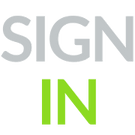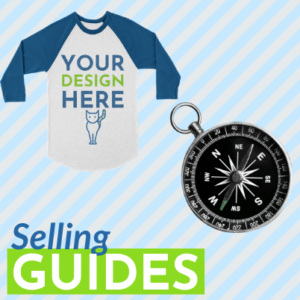Tips For Creating Top Selling Products
Updated: January, 2020
We hope this guide shines a light on how to execute top-selling designs.
As print on demand grows, it has become easier to start your own business. Anyone can start a business, but only a few can run a profitable business. Let’s take a look at some of the most common questions we get asked about designs that sell.
Disclaimer: Before we go more in-depth, I just want to emphasize that I am not a lawyer, and this is my understanding of basic copyright and trademark laws. In case you have more of a significant problem, please turn to a lawyer.
Copyright
Have you ever downloaded an image from the internet? Just because something is available online for free, doesn’t mean you get the rights to use it in your design.
Anything that is marked by ‘Public Domain’ can be used freely in your project.
Assets (icons) that are under Creative Commons can be a bit tricky because there are different types, and it’s important to follow the rules of each type. Get a better understanding of Creative Commons types here.
Watch out for a creative license that prohibits using the asset for commercial purposes, after all, you are in the business of making a profit. Always, always, read up on the user rights description carefully even if you download and asset for cash.
You are solely responsible for the legality of your project. Look at it from your point of view, how would you feel if someone was stealing your designs and selling them as their own? Do yourself a favor, don’t copy other people’s work. Everyone has the potential to create something unique, something that you can call yours, so don’t be a copycat.
Trademark
A trademark is a recognizable word, phrase, or symbol that distinguishes a specific product or service from others. Trademark protects items under the company brand.
- Business Name: Nike
- Business Symbol: The Swoosh
- Logos: Symbols
- Slogans: “Just do it.”
What does this mean for you? Using any artwork from the internet that you don’t own or didn’t make is ILLEGAL. Don’t do it. It can get you into trouble, or worse, a lawsuit.
Besides the legal concerns, there are other important factors that you, as a seller, should be looking at when designing an artwork for a garment.
Keep in mind these Do’s and Do Not’s are only suggestions. You can choose to apply or disregard this information based on your knowledge.
Create a purpose behind your design
Think about what you are going to do before you put pen to paper.
What’s your Why? Think about the way you do the things you do. Give your designs a purpose. The most common designs tend to encourage, motivate, educate, or do all three.
Be original
Push your creative skills past your limits, immerse yourself in new experiences to gain an appreciation for a variety of things. Be innovative and experiment with different kinds of typefaces, colors, and images. Try to steer away from what has already been done.
Sketch your ideas on your paper
Sketch out your designs from the ground up before you take them into Illustrator or Photoshop. You’ll come to find out that this practice is likely to generate more design ideas.
Printing Options
Direct-to-Garment – think about DTG as a basic printer that prints designs directly onto fabric.
Dye Sublimation – works a tad differently than DTG printing. Your design is printed on a sheet of paper and then transferred with heat onto the desired product. Sublimination printing shows a lot of detail in your design but only works with a limited number of garments – onesies, all-over-print tank, short and long sleeve. However, we do use a sublimation method for almost all of our accessory products.
Embroidery – is a simple old school method of applying thread to a choice of your product with the help of a needle. We use high-tech machines to bring your designs to life.
Design Placement
For a basic tee, you can choose from five different options: Front Only, Left Chest Only, Back Only, Left Chest and Back, and Front and Back. For more information on how to use CustomCat’s Direct-To-Garment design positioning presets, click here.
Design placement plays a crucial role in how people perceive your design. Are you looking for something more subtle (left chest), or a design that speaks for itself (front only)? Remember, you can also use the back of the t-shirt to showcase logos, jersey numbers, slogans, names, etc.
Limit mass-produced designs
Mass-produced designs lack creativity. It might work in some instances but in general, switching one word for another won’t really work. A few well-thought-out designs are better than sloppy ones.
Balance detail & simplicity
Some of the best selling designs are the ones that get the message across in the most simplest way. Simple text can go a long way. The human eye can only process a certain amount of information at a given time, so don’t overdo it. Aim to capture attention quickly to sell more products.
Garment & ink combinations
Do you ever feel overwhelmed by the variety of colors CustomCat has to offer? We get it. Here’s is the ultimate color combinations cheat sheet.
Disclaimer: All designs below were found on Etsy.com. All images have an existing link in case you want to make a purchase. We do not receive a commission based on your purchases. These images are solely used to gain a better understanding of color combinations.
Neutrals
Blue & White
Red & White
Steer clear of shadows
With print on demand, drop shadows can create problems causing your design to look odd.
Avoid using filler words
Use your voice wisely. Simplify your text to avoid wordy sentences to maximize the impact of the garment’s design. Avoid using words such as – That, Just, So, Very, Really, Some, Like, Seem, Think, Almost, Rather, Stuff, Actually, Literally, and Seriously.
Focus on composition
Some of the best designs out there are the ones that consider spacing and negative space in connection to the overall garment. Make sure your designs look proportional. Here are is an awesome resource by Canva to brush up on your composition skills.
Typography
Legibility and simplicity are the most important elements of your design. Make sure the letter spacing and line spacing is correct. Typography should compliment the graphic elements. Different fonts add that extra pop and make your visuals more appealing. Font choice can convey certain ideas or emotions.
Which font do you think would sell the best. The minimalist or the creative?


Symmetry
Visual balance is important, especially with print on garments. To accomplish visual symmetry imagine there is a vertical line running through the center of your design. Make sure both sides have the same amount of visual elements to achieve a great look.
Ready to put these tips to the test? It’s okay to get inspired by others, but remember, no one likes a copycat. Bring your point of view. Don’t try to understand what and why others are doing this and that. The only thing that matters is that your designs are unique, meaning no one else has done this before. A distinctive differentiation will help you stand out in the crowd.


